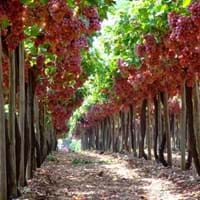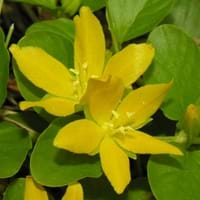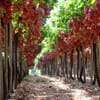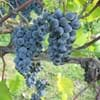Life Span
Annual and Perennial
Perennial
Type
Fruit
Flowering Plants, Perennial
Origin
Hybrid origin
Europe
Types
not available
creeping jenny
Habitat
Terrestrial
Near ponds, River side, Wet ground
USDA Hardiness Zone
5-8
4-8
Sunset Zone
1a, 1b, 2a, 2b, 3a, 3b, 4, 5, 6, 7, 8, 9, 14, 15, 16, 17, 18, 19, 20, 21, 22, 23, 24
1a, 1b, 2a, 2b, 3a, 3b, 4, 5, 6, 7, 8, 9, 14, 15, 16, 17, 18, 19, 20, 21, 22, 23, 24
Habit
Vining/Climbing
Spreading
Minimum Width
Not Available
Flower Color
White
Yellow
Flower Color Modifier
Bicolor
Bicolor
Fruit Color
Dark Red, Violet
Not Available
Leaf Color in Spring
Green
Green
Leaf Color in Summer
Green
Green
Leaf Color in Fall
Orange, Gold, Bronze
Green
Leaf Color in Winter
Light Green
Light Green
Leaf Shape
Irregular
Ovate
Plant Season
Spring, Summer, Fall
Spring, Summer, Fall
Sunlight
Full Sun, Partial Sun
Full Sun, Partial Sun, Partial shade, Full Shade
Type of Soil
Clay, Loam, Sand
Clay, Loam
The pH of Soil
Acidic, Neutral, Alkaline
Acidic, Neutral
Soil Drainage
Well drained
Average
Bloom Time
Late Spring, Early Summer, Summer
Late Spring, Early Summer
Tolerances
Drought
Drought
Where to Plant?
Container, Ground
Container, Ground, Pot
How to Plant?
Seedlings, Transplanting
Stem Planting
Plant Maintenance
Medium
Medium
Watering Requirements
Water occasionally
Requires a lot of watering, Requires regular watering
In Summer
Less Watering
Lots of watering
In Spring
Adequately
Moderate
In Winter
Ample Water
Average Water
Soil pH
Acidic, Neutral, Alkaline
Acidic, Neutral
Soil Type
Clay, Loam, Sand
Clay, Loam
Soil Drainage Capacity
Well drained
Average
Sun Exposure
Full Sun, Partial Sun
Full Sun, Partial Sun, Partial shade, Full Shade
Pruning
Remove damaged leaves, Remove dead branches, Remove dead leaves
Remove damaged leaves, Remove dead branches, Remove dead leaves
Fertilizers
All-Purpose Liquid Fertilizer
All-Purpose Liquid Fertilizer
Pests and Diseases
Red blotch
Pests and diseases free
Plant Tolerance
Drought
Drought
Flowers
Insignificant
Yes
Flower Petal Number
Single
Single
Foliage Texture
Coarse
Medium
Foliage Sheen
Glossy
Glossy
Attracts
Not Available
Not Available
Allergy
no allergic reactions
Asthma
Aesthetic Uses
Decorating walls, Showy Purposes
Beautification, Bouquets, Used for decorating walls, fences, gates, hedges, etc.
Beauty Benefits
used as a dye
Not Available
Environmental Uses
Air purification, soil erosion prevension on hill slopes
Provides ground cover
Medicinal Uses
Diarrhea, Fever, Headache, Hepatitis, Rheumatism, Stomach pain, Urinary tract problems
Diarrhea
Part of Plant Used
Fruits, Leaves
Flowers, Leaves
Other Uses
Used for producing cooking oil
Used as Ornamental plant
Used As Indoor Plant
No
No
Used As Outdoor Plant
Yes
Yes
Garden Design
Edible, Fruit / Fruit Tree, Vine
Container, Edging, Groundcover, Hanging Basket, Mixed Border, Water Gardens
Botanical Name
VITIS labrusca 'Fragola'
LYSIMACHIA nummularia 'Goldilocks'
Common Name
Fox Grape, Red Grape
Creeping jenny, moneywort, herb twopence and twopenny thot
In Hindi
लाल अंगूर
Lysimachia Nummularia
In German
Rote Trauben
Lysimachia Nummularia
In French
Raisin rouge
Lysimaque nummulaire
In Spanish
Uvas rojas
Lysimachia nummularia
In Greek
κόκκινα σταφύλια
Λυσιμαχία nummularia
In Portuguese
Uvas vermelhas
Lysimachia nummularia
In Polish
czerwone winogrona
tojeść rozesłana
In Latin
uva,
Lysimachiam nummularia
Phylum
Magnoliophyta
Tracheophyta
Class
Magnoliopsida
Magnoliopsida
Family
Vitaceae
Primulaceae
Clade
Angiosperms, Eudicots, Rosids
Angiosperms, Asterids, Eudicots
Tribe
Not Available
Not Available
Subfamily
Not Available
Not Available
Number of Species
Not Available
Not Available
Importance of Red Grapes and Lysimachia Nummularia
Want to have the most appropriate plant for your garden? You might want to know the importance of Red Grapes and Lysimachia Nummularia. Basically, these two plants vary in many aspects. Compare Red Grapes and Lysimachia Nummularia as they differ in many characteristics such as their life, care, benefits, facts, etc. Every gardener must at least have the slightest clue about the plants he wants to plant in his garden. Compare their benefits, which differ in many ways like facts and uses. The medicinal use of Red Grapes is Diarrhea, Fever, Headache, Hepatitis, Rheumatism, Stomach pain and Urinary tract problems whereas of Lysimachia Nummularia is Diarrhea. Red Grapes has beauty benefits as follows: used as a dye while Lysimachia Nummularia has beauty benefits as follows: used as a dye.
Compare Facts of Red Grapes vs Lysimachia Nummularia
How to choose the best garden plant for your garden depending upon its facts? Here garden plant comparison will help you to solve this query. Compare the facts of Red Grapes vs Lysimachia Nummularia and know which one to choose. As garden plants have benefits and other uses, allergy is also a major drawback of plants for some people. Allergic reactions of Red Grapes are no allergic reactions whereas of Lysimachia Nummularia have Asthma respectively. Having a fruit bearing plant in your garden can be a plus point of your garden. Red Grapes has showy fruits and Lysimachia Nummularia has no showy fruits. Also Red Grapes is not flowering and Lysimachia Nummularia is flowering. You can compare Red Grapes and Lysimachia Nummularia facts and facts of other plants too.





